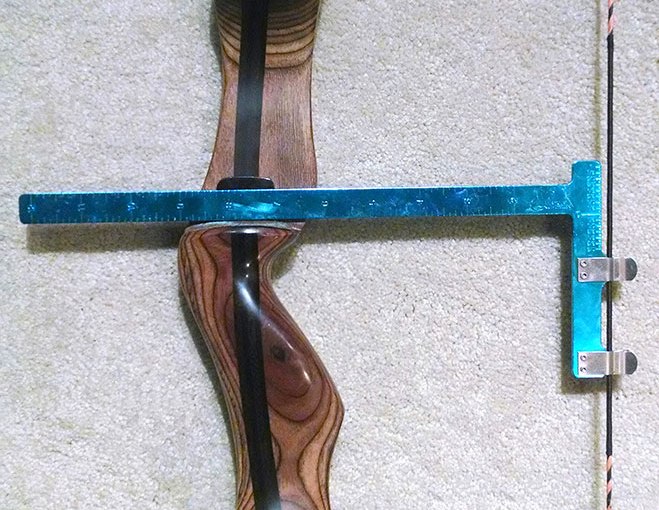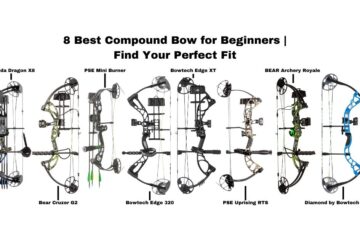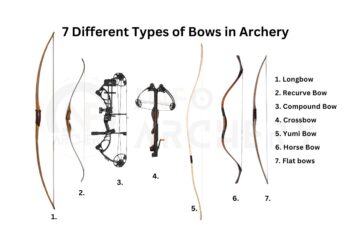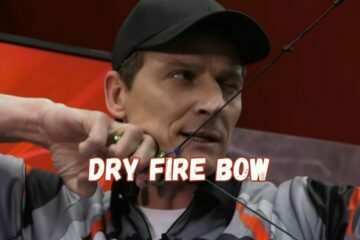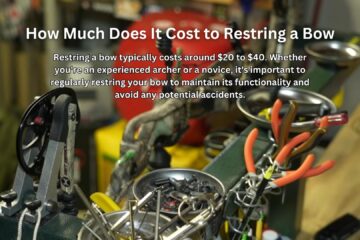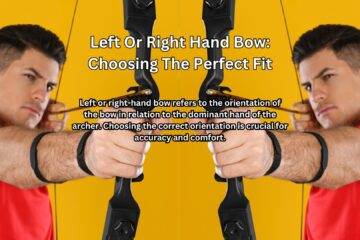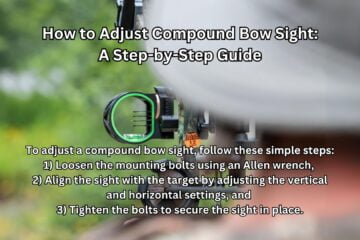Brace height on a bow is the distance between the grip and the bowstring at rest. It determines the power, speed, and accuracy of the shot.
Understanding brace height is essential for any archer to shoot effectively. The brace height is often overlooked by many beginner archers and hunters, yet it is a crucial factor in determining the optimal performance of a bow. The distance from the bowstring at rest to the grip of the bow is what’s known as brace height.
The length of the brace height varies from one bow to another, and it has an immense impact on the bow’s shooting power and accuracy. A bow with a shorter brace height will be faster but less forgiving, while a bow with a higher brace height will result in a slower arrow speed but more accuracy. As an archer, it’s essential to find the right brace height for your bow to achieve maximum performance and accuracy.
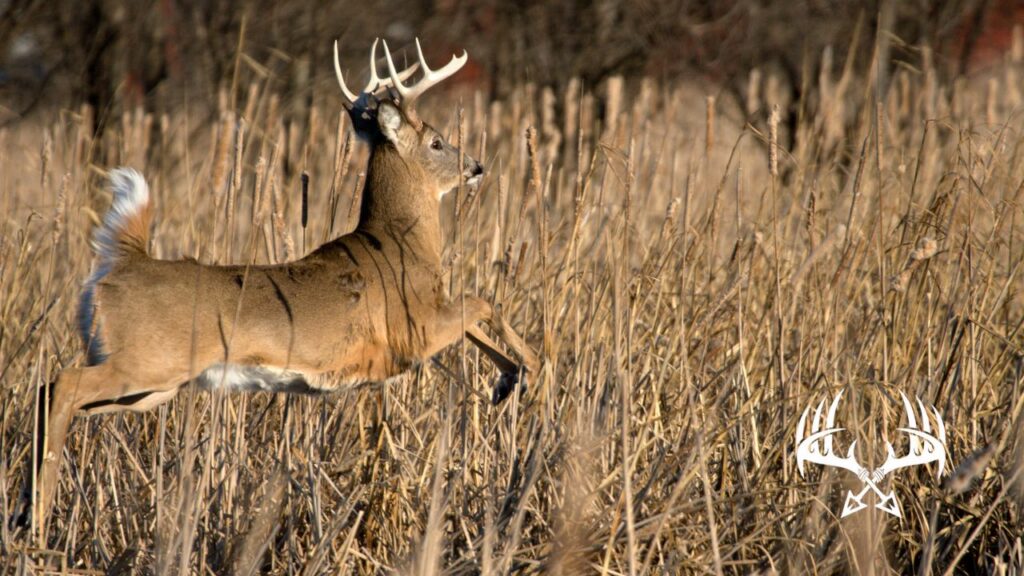
Credit: archeryhunting.com
What Is Brace Height?
Definition & Explanation Of Brace Height
Brace height refers to the distance between the bowstring and the grip of the bow when it’s at rest. This distance is essential as it directly impacts the performance of the bow in archery. A longer brace height will generate less arrow speed, while a shorter brace height will produce more arrow speed.
Here are a few essential points to understand about brace height:
- Brace height varies from bow to bow and depends on its design, style, and intended use.
- The brace height can affect the accuracy, consistency, and power of the shot, making it a critical factor for an archer to consider when selecting a bow.
- Generally, the recommended brace height is between 7-9 inches; this is because it provides the most consistent and comfortable shooting experience.
Importance Of Brace Height In Archery
Brace height plays a crucial role in determining the accuracy, power, and consistency of shots in archery. Here are some of the key reasons why brace height is vital:
- Proper brace height facilitates a clean, accurate release of the arrow and improves overall shooting form.
- A well-maintained brace height also helps to reduce vibration and noise during the shot.
- Failure to maintain a proper brace height can lead to a number of issues, such as erratic arrow behavior, poor accuracy, and even damage to the bow itself.
Relationship Between Brace Height And Arrow Speed
The brace height of a bow can significantly impact the speed of an arrow. Here’s how it works:
- A shorter brace height will result in an increased amount of energy transfer from the bowstring to the arrow, leading to a faster arrow speed.
- However, a shorter brace height also increases the risk of the bowstring slapping against the shooter’s arm, reducing accuracy and causing physical injury.
- In contrast, a longer brace height reduces the amount of energy transfer, resulting in decreased arrow speed.
Understanding brace height is crucial for any archer, as it can make a significant difference in the accuracy, power, and consistency of your shots. Keep in mind that each bow has its own unique brace height, and it’s essential to maintain that distance for optimal performance and safety.
Factors Affecting Brace Height
Bow Design & Construction
The brace height of a bow is directly related to its design and construction. Here are some of the factors that affect the brace height of a bow:
- Limb length: The longer the limbs, the lower the brace height.
- Riser geometry: The shape and design of the riser can affect the brace height. Generally, a higher grip position will result in a lower brace height.
- Bow length: The longer the bow, the lower the brace height.
Bowstring Material & Length
The type and length of bowstring used can have a significant impact on the brace height of a bow. Here are some points to consider:
- Material: The stretchiness of the string material can impact the brace height. Fast flight strings have less stretch than dacron strings, resulting in a lower brace height.
- Length: The longer the bowstring, the higher the brace height.
Arrow Shaft Material & Weight
The weight and material of the arrow shaft can also affect brace height. Here are some things to keep in mind:
- Shaft material: Heavier arrow shafts require a higher brace height, while lighter ones require a lower brace height.
- Shaft length: Longer arrow shafts require a higher brace height.
Draw Length & Weight
Finally, the draw length and weight of a bow can significantly impact the brace height. Here are some points to consider:
- Longer draw length: Longer draw lengths require a higher brace height.
- Higher draw weight: Increased draw weight requires a lower brace height.
As a writer, it is crucial to understand the importance of brace height in a bow and the various factors that impact it. By following the above guidelines, the bow’s brace height can be adjusted for optimal performance.
How To Determine The Ideal Brace Height For Your Bow
Importance Of Proper Brace Height
The brace height of a bow refers to the distance between the grip of the bow and the bowstring when the bow is not in use. Understanding the importance of proper brace height is crucial for archers who want to become more skilled and accurate.
Here are some reasons why it’s essential to have the correct brace height for your bow:
- Incorrect brace height can result in unnecessary vibration and noise, which can affect your shot.
- A bow with an incorrect brace height can lead to decreased arrow speed and accuracy, making it challenging to hit your intended target.
- Proper brace height allows for maximum energy transfer from the bow limbs to the arrow, which can help you achieve greater accuracy.
Steps To Determine Your Bow’S Optimum Brace Height
Determining the ideal brace height for your bow is a simple process. Follow these steps to calculate the optimum brace height:
- Consult the bow manufacturer’s guidelines for recommended brace height range.
- Attach the arrow rest to the bow.
- String the bow and install the nocking point.
- Measure the brace height using a bracing height gauge.
- Make adjustments to the brace height by twisting or untwisting the bowstring until the proper brace height is reached.
Adjusting Your Brace Height For Improved Performance
Adjusting your brace height can improve your performance in several ways. Here are a few tips on how to adjust your brace height:
- If your bow is too quiet, try increasing the brace height. This can reduce vibration and noise.
- If you want to increase your arrow speed, reduce the brace height. This will increase the energy transfer from the bow limbs to the arrow.
- If you’re having trouble with accuracy, adjusting your brace height can be an effective solution. Experiment with different brace heights until you find the best one for you.
Understanding brace height is crucial for archers who want to improve their accuracy and performance. By following the steps mentioned above, you’ll be able to determine the ideal brace height for your bow and make the necessary adjustments to improve your shooting.
Remember, the importance of proper brace height cannot be overstated, so don’t neglect this essential aspect of archery.
Common Brace Height Myths And Misconceptions
Brace height is an essential part of archery that many people misunderstand. It refers to the distance between the deepest part of the grip and the bowstring when the bow is at rest. In this section, we will look at common myths and misconceptions surrounding brace height.
Myths About Brace Height And Arrow Speed
There are many myths about brace height’s impact on arrow speed. Here are the key points you need to know:
- Myth: A longer brace height means slower arrow speed.
- Truth: In some cases, a longer brace height can result in higher arrow speed. However, this is dependent on a variety of factors, including the bow’s design and the archer’s shooting form.
- Myth: A shorter brace height always results in faster arrow speed.
- Truth: While a shorter brace height can sometimes result in faster arrow speed, this is not always the case. A brace height that is too short can cause accuracy issues and lead to inconsistent shots.
Common Misconceptions About Brace Height And Bow Tuning
Another common misconception is that brace height does not affect bow tuning. Here are some key points to remember:
- Misconception: Brace height has nothing to do with bow tuning.
- Truth: The brace height can directly impact the bow’s tuning, as it affects the bow’s dynamic spine, or the bow’s ability to flex and return to its original position.
- Misconception: Brace height is an arbitrary measurement that doesn’t mean anything.
- Truth: Brace height is a critical factor in setting up a bow correctly and can have a significant impact on its performance.
Debunking Popular Myths About Proper Brace Height
It is essential to debunk popular myths about proper brace height to get the best out of your bow. Here are some key points to know:
- Myth: The longer the brace height, the more accurate your shots will be.
- Truth: While a longer brace height can assist in accuracy, it can also result in a slower arrow speed and less kinetic energy.
- Myth: You should always shoot with the manufacturer’s recommended brace height.
- Truth: The manufacturer’s recommended brace height is just a starting point. You may need to experiment with different brace heights to find the sweet spot that optimizes performance.
Brace height is a crucial factor that impacts your bow’s performance. Understanding the common myths and misconceptions surrounding it is essential to ensure that you get the most out of your archery experience.
Faqs About Brace Height
Answering Your Questions About Brace Height For Improved Accuracy And Performance
As an archer, you know the importance of precision and accuracy in hitting targets. One of the significant factors in achieving these goals is understanding a bow’s brace height. Below are some common questions frequently asked about brace height and their answers:
Common Questions About Brace Height In Archery
What Is Brace Height?
In simple terms, brace height refers to the distance between the bowstring at rest and the bow handle’s deepest part. It is measured from the bowstring’s belly to the deepest part of the bow grip. The brace height affects the bow’s performance and accuracy.
What Is The Ideal Brace Height For My Bow?
The ideal brace height for your bow depends on factors like the bow type, draw weight, arrow weight, and arrow type. Different bows have varying recommended brace heights. It is crucial to consult your bow manufacturer’s specifications to determine your bow’s ideal brace height.
What Are The Consequences Of A Wrong Brace Height?
A wrong brace height can drastically affect your bow’s performance. If the brace height is too high, the bow’s power will decrease, and the bowstring might slap your arm. On the other hand, if the brace height is too low, the bow’s power increases, but accuracy decreases, making it harder to hit your target.
Additional Tips And Tricks For Maintaining Proper Brace Height
Besides checking your bow’s recommended brace height, below are some additional tips you might find helpful in maintaining your bow’s proper brace height:
- Always measure your bow’s brace height before and after every shooting session.
- Use the recommended bowstring and arrows for your bow.
- Regularly check your bowstrings and cables for signs of wear and tear.
- Avoid leaving your bow in extreme temperatures, as they can affect the brace height and overall bow performance.
- Seek the help of a professional to adjust your brace height if you cannot do it yourself.
By understanding brace height and implementing the above tips, you will significantly improve your accuracy and overall performance in archery. Remember always to prioritize safety and consult with professionals if in doubt. Happy shooting!
Frequently Asked Questions
What Is Brace Height On A Bow?
Brace height is the distance between the grip of the bow and the bowstring at rest. It affects the bow’s speed, power, noise level, and accuracy, making it an essential factor to consider when setting up a bow.
How Does Brace Height Affect The Bow’S Speed?
If the brace height is longer, the bowstring will have more time to move forward, which means more energy will be transferred to the arrow, making it travel faster. Conversely, if the brace height is shorter, the arrow will travel slower.
How Does Brace Height Affect The Bow’S Power?
A longer brace height means the bow has more stored energy, making it more powerful. A shorter brace height means less energy, making it less powerful.
How Does It Affect The Bow’S Accuracy?
The brace height affects accuracy because it changes the bow’s timing, which impacts the way the arrow leaves the bow. If the brace height is too long or too short, it can cause the arrow to fly off course.
What Is The Ideal Brace Height For A Bow?
The ideal brace height varies depending on the bow, bowstring, and archer’s preference. As a general rule, a brace height of 7 to 8 inches is suitable for most bows. However, it is recommended to consult the bow’s manual or an experienced archer before adjusting the brace height.
How Can I Adjust It?
To adjust the brace height, you need to twist or untwist the bowstring. If you need to increase the brace height, untwist the bowstring by removing some of the twists. If you need to decrease the brace height, twist the bowstring by adding more twists.
It is recommended to make small changes and test the bow’s performance before making more adjustments.
Conclusion
As a final thought, understanding brace height is crucial for any archer. It is an aspect that has a significant impact on accuracy, speed, and overall shooting experience. By properly adjusting the brace height of your bow, you can achieve a balance between speed and accuracy that suits your shooting style.
It’s also worth noting that different bow types and draw lengths require different brace heights, so it’s essential to consult your bow’s manufacturer’s recommendations before making any adjustments. A well-tuned brace height can take your archery game to the next level, so take the time to experiment and fine-tune your setup.
Happy shooting!

